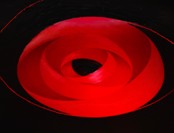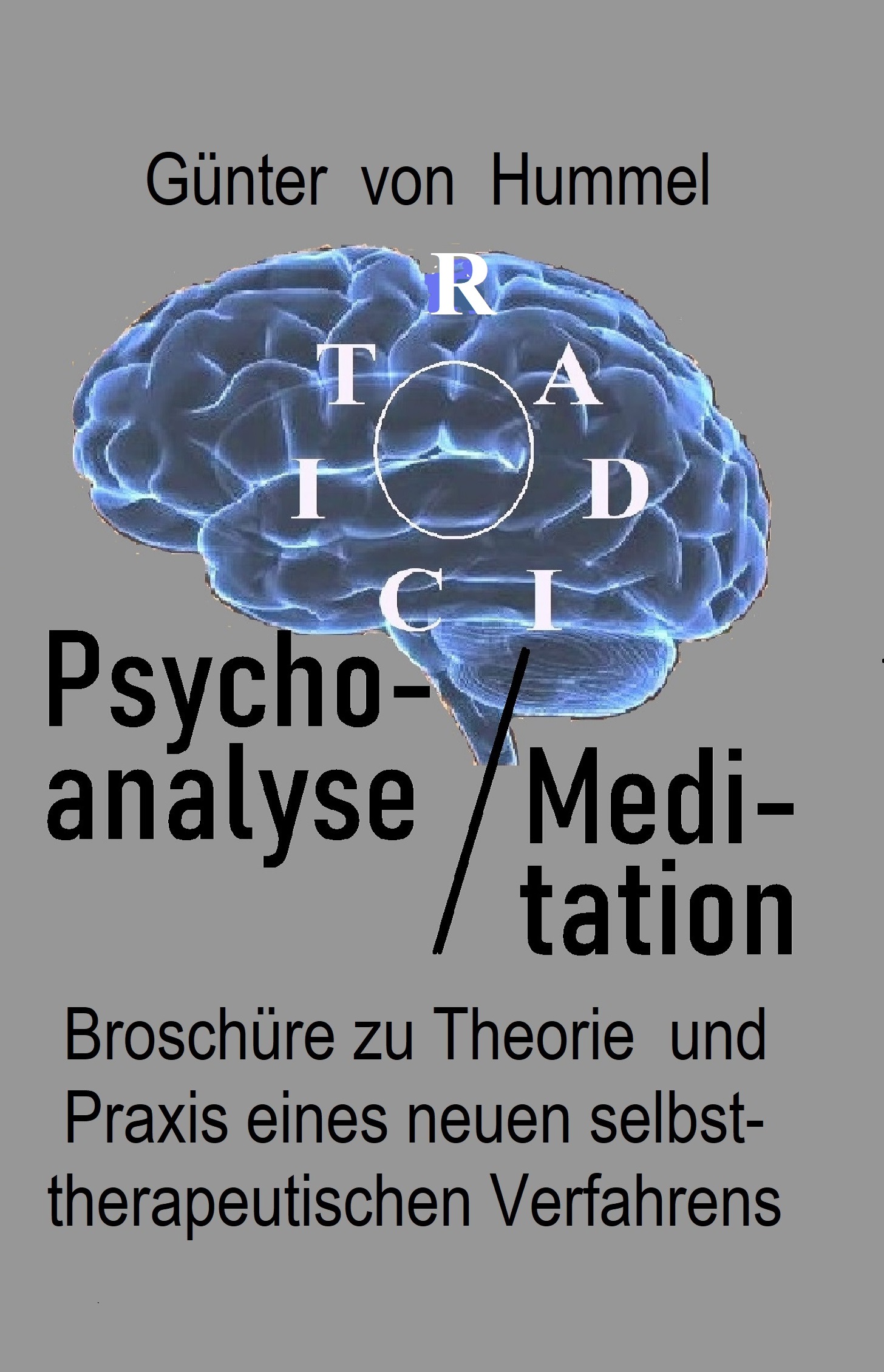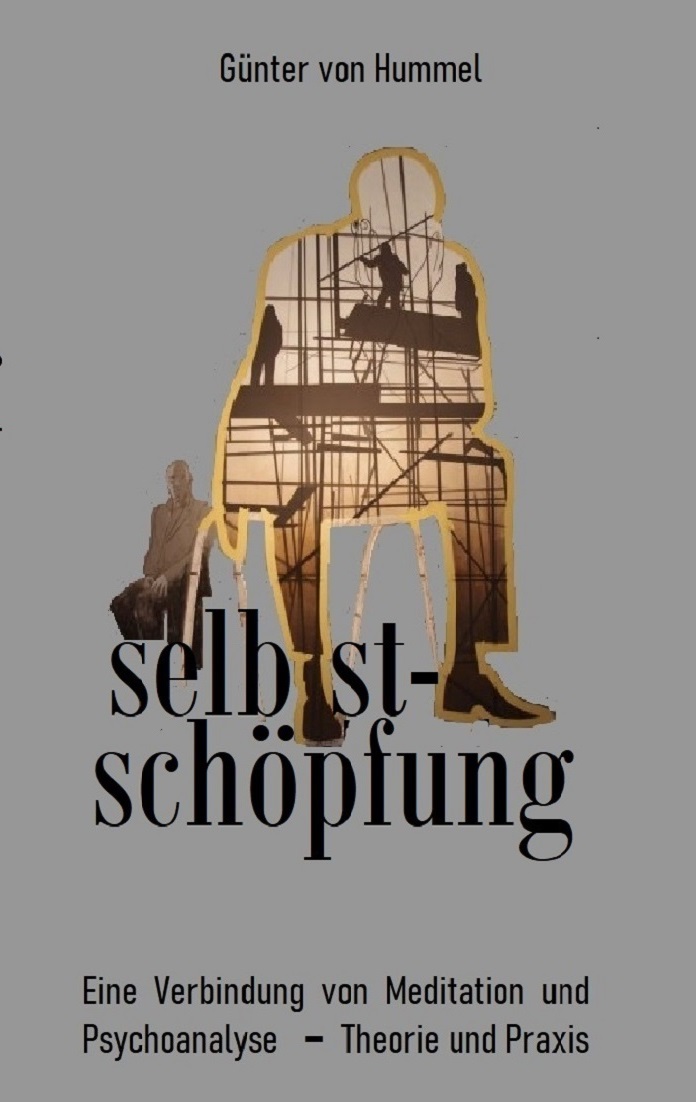Beitragsseiten
Almost any physical illness also has an aspect that pertains to the nervous system, the psyche, the unconscious, or however you would choose to name it. Since all of the physical functions are 'mirrored' in cerebral activities, physicians claim, that any illness will have a corresponding focus point in the brain, which would collaborate with the illness. Scientifically, such a focus point has failed to be found, though it may well be imagined as being similar to a psychosomatic disturbance. Perhaps the expression 'focus point' is only overly mystical, just too simplified. After all, it pertains to a collaboration of 'mirroring' nerve cells or mental dazzles, as mentioned in footnote l, and these cannot be measured. Maybe it would be best to speak of a strictly unconscious structure or of the unconscious as such, as does the founder of psychoanalysis, S. Freud. Simultaneously, we could assume it to be in an undetermined form and without the support of neurology or purely academic psychology.
My book, Meditation / Wissenschaft (Meditation / Science), attempts to describe such a form, a form left as undetermined as possible, and which illustrates the theory and practice of a new therapeutic method. After all, what would the value of the best theory be, were it not to lead to a practical therapeutic method? On the one hand, I have derived such a method from psychoanalysis which, today, provides for the scientific essentials needed for such a therapeutic method. On the other, it also includes other methods, such as autogenous training and other traditional methods of relaxing meditation with more emphasis on practical application. Per se, all of the latter methods have one disadvantage in common: they exceedingly accentuate the conscious (or, better said: the 'known', pre-allocated sense, subject matter, or thoughts).
Though they may be more illustrative (image-like), they neglect the symbolism (word-like) of the unconscious, which is regarded as substantial and of high importance in psychoanalysis. Here symbolism (or word-like) goes to say: it converses to itself in the unconscious; it is not a structural condition, as in a type of unconscious and deep sentiment, mental experience or psychic being or anything similar. In fact, it pertains to sense, meanings, or symbolisms. It aspires to address, or to express, something within ourselves. Or: it urges to be pronounced. It has already been articulated, or almost been verbalized, though it remains mostly undefined, elusive - or just unconscious. Do we need to proceed so scientifically and in multiple manners (psychoanalysis here and relaxation methods there)? Does it not cause excessive complication? Yes, it does. However, nowadays, we can't just engage in methods that are only plausible or believable, and not really proven.
Do we need to proceed so scientifically and in multiple manners (psychoanalysis here and relaxation methods there)? Does it not cause excessive complication? Yes, it does. However, nowadays, we can't just engage in methods that are only plausible or believable, and not really proven.
Aid for psychosomatic illnesses (illnesses that manifest physically, but have mental causes) needs to be based on scientifically elaborated theory, such of that psychoanalysis, and requires clear correspondence between such theory and practice (relaxation methods). Hence, it involves a little intellectual effort and pursuant, leads to actually knowing what you are doing and that you can rely on it, because such a method remains consistent all the way through to scientific contexts. The Moebius band (shown at the righthand side) is a normal band twisted around by 180 degrees. It is an ideal model for the main two twisted psychic principles. In psychoanalysis we call these principles drives (eros- and death-drive by Freud), but as an example, we can speak of the unconscious emotions of demand and desire. Demand and desire are in an unconscious conflict, they are the front- and back-sides of only one deep psychic organisation (just as the band of Moebius only has one surface, but two sides).
The depiction is geometrical art by T. Heydecker.
After all - and in line with Freud's concept - the psychic apparatus is comprised in the same way as the above mentioned two components. One component is and remains mostly unconscious concerning its nucleus. It is original and more illustrative and it is near to what Freud calls the scopic drive, which is highly multi-layered in its 'primal process' . But it has a very different structure as the above mentioned illustrative and image-like conscious approach by meditation to the psychic apparatus. Nevertheless, we will see later on, that we must find a connection of the conscious and the unconscious at exactly this point. The scopic drive deals in a certain kind with what Freud has called a 'compulsion repetition'. For seeing, for gazing an object one has - as neurologist Linke says - to grab twice or even more with looking intention.
There is a kind of repetition using the scopic drive. The other component is, as I also mentioned above, more word-like (Lacan calls it: drive to speak), and can be made aware of through the interpretation of dreams, the interpretations of so-called 'free associations' or through experiencing and interpreting verbal blunders and plights. The question arises: how are the two components I described, combined with each other in said method? How is something similar to meditation, and practiced, at home to be combined with an exact science of the psychoanalytic unconscious? How do you work with the first of these components, with the illustrative, but without neglecting the second, more word-like component?
And vice versa: would you still be in the field of psychoanalysis, were you to practice something on your own, without your psychoanalyst there with you? How can we speak of meditation, if such is emphasized as an intellectual subject? This can only be done by intellectual comprehension and by grasping practically what the essence of both is - psychoanalysis and relaxation methods. The essence lies in a central linguistic-like element which Lacan calleda 'linguistic crystal'. This again reflects our two elements: the crystal-like is an 'It Radiates', 'It Shines', again similar to the original perceiving- or scopic-drive. It is neither physical (as we understand physics today) nor is it psychical (if we understand it to be conscious). But it is unconscious or even better: an unconscious real, an imaginary signifier. The same applies to the linguistic-like element which is an 'It Sounds', 'It Speaks' or theoretically spoken: a verbal signifier. Both are in a narrow combination to each other.
This combination arises through the production of the so called 'free associations' in psychoanalysis, namely the freely expressed ideas the patient has to pronounce. And in meditation, or relaxation methods, it is used in mantra-like formulae, in Koans (Zen-Buddhism) or in 'holy names'. But nowadays we cannot practice psychotherapy with holy names or mantras, because we cannot derive them in a scientific way. Maybe they were helpful to earlier generations, but here and now we will create a scientific method, namely 'Analytic Psychocatharsis'. In this method, the 'linguistic crystal' is formed by formulations which contain a one stringent formulation of three or more meanings, or of three or more significations. I call these Formula Words. Below is an example of such a formulation in Latin (which is similar to Sanskrit, and both are very well suitable languages for dealing with this linguistic construction):

If you start reading from the O or A or M, you will always receive or hear a different meaning from this letter-circle. Orsa C eram means: I had a beginning hundred times. Amor sacer means: Love is serious. Mors acer means: Death is bitter. Ac era mors means: the mistress is death-like, and so on. Even if all these meanings sound strange, it is important that the meanings in combination with each other do not have a conscious nor a logical sense. Thereby, the person reading this formulation remains in a 'floating, poised attention'. This precisely represents the psychoanalyst's situation, whose task it is to remain in such a condition for listening to not only what the patient speaks, but also what can be heard from between the spoken lines, or, what sounds come from the unconscious! It doesn't matter what the single meaning of one or the other formulation is. The structure alone is important, as is the 'linguistic crystal', and how the development is to be comprehended. Moreover, how it intervenes directly in the unconscious.
Both the unconscious and the 'linguistic crystal' are constructed in the same way. I have already stated the practice of this actually new method in other publications, but would like to emphasize it in brief and again: As a first exercise, one sits in a convenient position, at best with closed eyes while remaining concentrated inside. At the same time one should silently repeat the Formula Words mentally. This constantly engages the process of the Shines / Speaks in correspondence to the principle of repetition. The unconscious is called upon and invoked. It is increasingly forced to itself issue its content, truth and essence in the subject. Again: The Formula Words are silently repeated during this experience of pure introverted attention, or of this 'pure visibility'. It is just such monotonous repetition of the Formula Words that support experience with the Shines, and vice versa - the whole process is thereby deepened.
This repetition stays in contrast to the above mentioned 'compulsed repetition' which is unconscious. The repetition in Analytic Psychocatharsis is conscious but this does not disturb the main concept of psychoanalysis. The psychoanalyst S. Heenen-Wolf said accordingly with Lacan that there exists also a 'work-repetition'. That means one can confront the unconscious repetition with a conscious one but only if this does not contain a prepared meaning, a special significance.
Now we must see what the crucial point of a combination of psychoanalysis with meditation methods is: In meditation (relaxations methods, yoga) one starts from a conscious, or pre-formed item and remains there in a certain way. This means that an illustrative, image-like element or even an ideology dominates the whole process method. Psychoanalysis starts from wording and identically remains there to a certain extent , but it is the contrary of ideology. It deals with the wording process until the last item has been found (usually the end of a psychoanalytic treatment is not reached). For example: One of my (very sceptical) patients made an experience that may clarify the complex of the word and image-like processes.
During practising the method with the Formula Words, he could somehow hear, or think, or grasp the formulation 'nothing said', but simultaneously he recognised that there was something said, namely the word-couple: 'nothing said'! That's just what produced the 'linguistic crystal'. This production contains a double meaning, a controversial announcement as logicians call it. 'I am lying' demonstrates the same thing: how can a liar say that he is lying!?< Again: Concerning this first exercise with the Shines (the imaginary signifier), we only need to wait for a perception (in the broadest sense of the meaning, since it is not to be regarded as a sensuous perception) of something that corresponds to this Shines. Yogis or other teachers in meditation often speak of 'pale light', 'sallow light' and sometimes even of 'black light'.
They attempt to express that experiencing the Shines is not necessarily a perception of light (and not at all something than can be perceived with the eyes), but rather something of the sorts of a Shines. It can also be the sensation of a body image, the experience of space expanding within oneself, or a feeling of oscillation. In short, something that is lustrously and iridescently different to daily sensuous experiences, and that everyone has experienced when falling asleep: The body becomes insentient and one experiences a psychocatharsis. The second exercise, that of the Speaks, is practiced subsequent to exercising the first for a while. The second exercise aslo requires introverted concentration, but this time on a kind of 'sound', or as Lacan called it: the 'universal murmur' of the unconscious.
We can refer to it as a murmuring, sounding, an intonation or as a Speaks. Because: 'It Speaks in the unconscious', It (the Freudian It) lets libido 'talk'. This talk is just 'sound', a Speaks, not absolutely verbal, printable speech but is similar to a disclosure, or like an announcement (remember the example of the person with the experience of the 'nothing said'). The case here (in psychoanalysis as well as in meditation methods) is not acoustic hallucination, but rather an experience of the primal process of the drive to speak. When concentration on this second exercise is then in combination with 'sounds' from the Formula Words, the method achieves its full multi-layer properties and maturity. Ergo, it is the unconcious real which expresses itself in the trinity Shines - ORS-ACE-RAM - Speaks up to the point where all is said and done. It is then up to the individual to share it with others without relying on being prompted by a guru or his psychoanalyst.
This could be the point where the adept might become a teacher himself. I am not speaking here as a meditation teacher, a guru, or as a didactic analyst, but am applying a simple comparison of psychoanalytic and meditative methods. I've established this 'Analytic Psychocatharsis' from the viewpoint of a western scientist and the result is a method, theory and practice of a new psychotherapeutic method. It is a method anyone can benefit from, and can enrich by reading further literature of Freud and Lacan, or any other corresponding scientific papers. They only need to be read appropriately.


